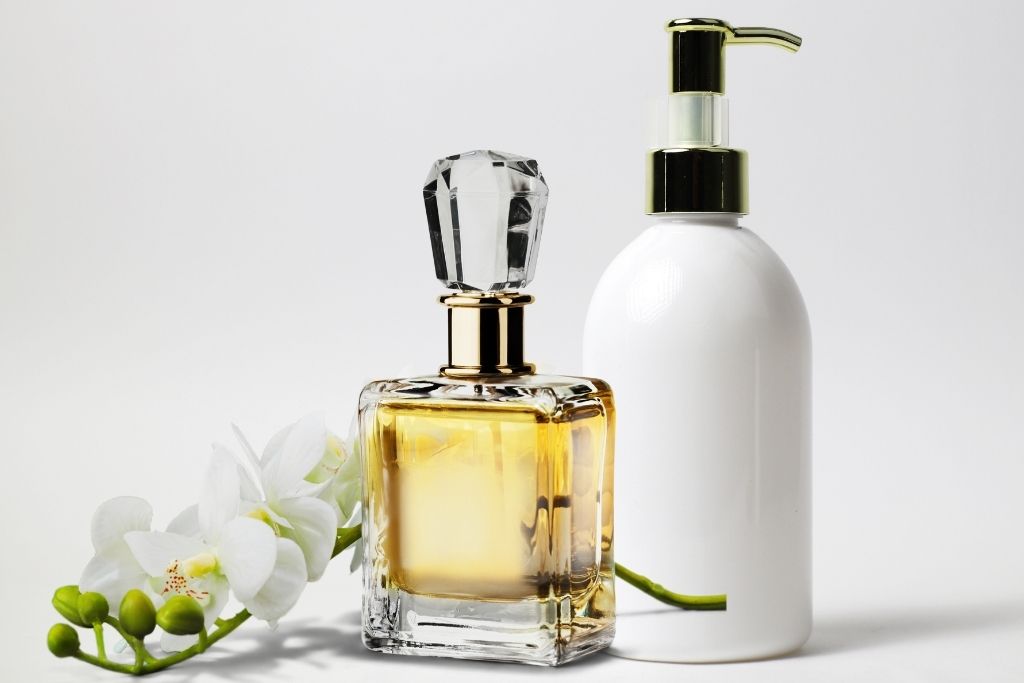Seasonal scent layering offers a brilliant, flexible way to tweak your fragrance. You can match it perfectly to the weather and your mood without ever sacrificing that personal signature. By blending warm and cool notes, you essentially craft combinations that somehow just work, irrespective of the season rolling around. This technique, you see, makes your favourite scents far more adaptable; they shift gracefully right along with the changing season.

Don’t feel you have to commit to just one signature scent. Fragrance layering actively encourages you to mix things up, so get creative and use different combinations! For instance, try pairing herbal or zesty citrus notes with richer woods or spices for a lovely harmony. Not only does this smooth out the jump between seasons, but it also helps you develop a scent wardrobe. This wardrobe then feels both carefully considered and genuinely ready for anything.
Anyone can master rotating fragrances with a few straightforward methods. You’ll easily avoid common mistakes and ensure your perfumes are stored for maximum longevity. The whole process, put simply, becomes much more than just following trends; it is a genuinely rewarding way to build a scent identity that stays consistent, yet never, ever feels boring.
Quick Reference Table: Seasonal Layering Guide
This table provides a concise overview of how to balance warm and cool notes for optimal year-round appeal. Use it to quickly identify the best complementary fragrances based on the time of year.
| Season | Goal | Base Notes (Warm) | Top/Accent Notes (Cool) | Example Blend |
| Spring | Freshness with Warmth | Soft Vanilla, Light Amber | Jasmine, Lily of the Valley | Vanilla with Lily of the Valley |
| Summer | Cooling & Sweetness | Hint of Coconut, Honey | Citrus, Aquatic Notes | Aquatic notes with a touch of Honey |
| Autumn | Richness with Fresh Air | Spicy Woods (Cardamom) | Fresh Citrus (Bergamot) | Cardamom and Bergamot |
| Winter | Deep Comfort & Brightness | Amber, Vanilla | Pink Pepper, Citrus Zest | Amber with Citrus Zest |
What Is Seasonal Scent Layering?
Understanding scent layering starts with moving beyond the idea that you should only wear one fragrance at a time. This technique involves deliberately combining two or more scented products to create a bespoke, evolving fragrance story that is uniquely yours. It is about building a personal scent profile rather than simply applying a single perfume.
Beyond Single Scents: The Art Of Personal Fragrance
Do you stick only to one perfume or candle? That’s totally fine. However, lots of people actually mix and layer fragrances to build something much more intriguing. For example, they might start with a citrusy body wash, followed by a floral lotion, and finally finish with a soft musk. Each element adds depth and a fresh layer, guaranteeing the scent evolves right alongside your day.
- Base: Unscented or lightly scented lotion
- Middle: Herbal or floral spray
- Top: Woody or spicy perfume
The Warm Vs. Cool Spectrum: Understanding Fragrance Notes
Fragrance notes are categorised by the feeling they evoke, which is essential for seasonal balancing. You need to know which side of the spectrum your favourite notes fall on to start mixing successfully.
Warm notes (spices, amber, vanilla, and woods) lend a cozy feeling. Conversely, cool notes are inherently fresher; these include citrus, green, aquatic, and certain florals. Grasping where a scent sits on this spectrum becomes essential for effectively mixing and matching across all seasons.
Why Layer Scents Seasonally?
Layering seasonally is far more than a frivolous exercise; it offers practical benefits that enhance both the impact and longevity of your fragrance. By combining products, you turn a simple routine into a sophisticated strategy for scent management.
Extend Longevity And Impact
Layering actively locks in those fragile scent molecules. This simple action means your fragrance lasts much longer and keeps it balanced throughout the day.
Maximise Your Perfume Collection’s Versatility
There’s absolutely no need to buy new bottles every single season. Instead, simply mix what you already own. This strategy often delivers exciting, fresh results every time.
Prevent Olfactory Fatigue
Switching up your scents regularly helps a lot. It keeps you fully aware of the fragrance, guaranteeing the aroma never smells stale to your nose.
Mastering Warm And Cool Notes For Year-Round Appeal
Achieving perfect balance requires a working knowledge of the notes you are handling. Once you can quickly identify which category a fragrance belongs to, you gain the confidence to create complex, appealing custom blends.
Identifying Warm Fragrance Notes
- Spices: Cinnamon, clove, cardamom
- Woods: Sandalwood, cedarwood, oud
- Gourmands: Vanilla, tonka bean, cocoa
Identifying Cool Fragrance Notes
- Citrus: Bergamot, grapefruit, orange
- Herbal: Mint, basil, rosemary
- Green: Grass, galbanum, green tea
Balancing Warm And Cool Notes
For a truly harmonious blend, always begin with warm notes as your base. Then, simply layer the cool notes right on top of that.
Seasonal Guides To Mixing Warm And Cool Notes
Seasonal adjustments ensure your scent always feels trending and appropriate for the climate and time of year. Using this guide, you can confidently transition your fragrance from the heat of summer to the depths of winter.
- Spring Layering: Freshness With A Hint Of Warmth
- Try pairing jasmine or lily of the valley with soft vanilla or light amber. The result is a scent that’s bright, yet beautifully grounded.
- Summer Layering: Cooling Notes With A Touch Of Sweetness
- Mix citrus or aquatic notes with just a hint of coconut or honey. This combination provides a refreshing depth.
- Autumn Layering: Richness With A Burst Of Fresh Air
- Combine spicy woods with fresh citrus (cardamom and bergamot, for example). This technique keeps things feeling lively.
- Winter Layering: Deep Comfort With Sparkling Accents
- Blend amber or vanilla. Then, use accents like pink pepper or citrus lemon zest. This gives you warmth that still manages to feel bright.
Essential Techniques For Effective Scent Layering
Successful scent layering requires more than just mixing scents; it involves proper skin preparation and strategic application. Following these fundamental steps ensures your created fragrance lasts and projects exactly as intended.
- Prepare Your Skin: You must moisturise! Use an unscented lotion or oil. This crucially gives the fragrance molecules a surface to cling to.
- Strategic Application: Apply perfume to pulse points. A light misting of clothes or hair also dramatically helps the scent linger.
- Order Of Application: Always start with strong scents first. Only then should you add the lighter ones; this stops those delicate notes from getting lost.
- Complementary Products: Use matching shower gels and lotions for cohesion. Alternatively, use unscented products, which keep the focus entirely on your chosen perfume.
Building A Versatile Scent Wardrobe
A versatile wardrobe is built on a foundation of key fragrance families, allowing for endless mixing and experimentation. By testing small samples, you can invest wisely and ensure every bottle you own contributes to your layering potential.
- Core Fragrance Families:
- Citrus/Fresh
- Floral
- Woody/Amber
- Spice/Oriental
- Sample Testing: Always try discovery sets or samples on your skin first. Only then should you truly commit to purchasing full bottles of designer signature perfumes or their more affordable alternatives.
Common Layering Mistakes To Avoid
- Incompatible Notes: Stick to related families or overlapping accords. This is genuinely the best way to prevent clashing.
- Overwhelming Combinations: Keep your scent limit to two or three layers. Carefully consider direct versus indirect layering methods.
- Skipping Skin Prep: Unprepared skin is a mistake. It causes scents to vanish too quickly or blend unevenly.
Storing Your Perfumes
- Keep bottles upright.
- Store them in a cool, dark place, away from humidity.
- Use the original boxes for extra light protection.
Frequently Asked Questions
How do I combine warm and cool notes?
Start with a warm base fragrance, such as amber or wood. Top it with a cool note like citrus or mint. Limit yourself to two layers (it avoids any muddiness).
How can I transition scents between seasons?
When autumn approaches, fade out summer florals by introducing a touch of spice. For winter bases, you can easily add brightness using citrus or herbal accents.
What scent families blend well year-round?
Woody and citrus, floral and amber, or green and musk are all classic pairings. They successfully work across all four seasons.
